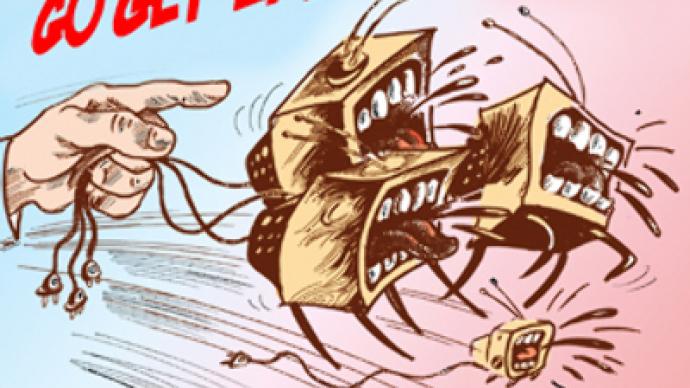A small war that mattered – 40 years since the Damansky Island tragedy

Technically, the Damansky conflict was a local two-episode frontier engagement between Chinese and Soviet soldiers on March 2 and March 15, 1969. Statistically, it was, for the lack of a better term, small.
Today it is remembered for what it was in fact: a real shooting war with its own dead and its own heroes; a war that was misrepresented by the Western, Soviet and Chinese media in a big way, all the while in reality it triggered one of the major shifts in the Cold War global balance of power.
In 1969 I was six. Too young to have known that ‘Stalin and Mao are listening to us’ or that ‘the Russians and the Chinese are brothers forever.’ These songs belonged to the generation of my parents as did their Chinese college classmates and friends who, by the end of the 1960s, were already embers in the fires of the ‘Cultural Revolution.’
Nearly every family had someone in the armed forces. Besides, the Soviet Union was populated by members of my parents’ generation, the bearers and recipients of every effect of the Khrushchev Spring, including a somewhat laxer security discipline, so the initial media blackout never worked. In 1969 boys in my kindergarten stopped their usual war games of ‘the fascists and the Soviets’ (the Great War was only 25 years in the past and fresh in the memories of our parents and grandparents), switching for a while to ‘the Chinese and the Soviets.’
The full truth about the war on Damansky, including the number of casualties, was told to the Soviet people several years later. As it was the rule, it took a Politburo decision to release the figures to the newspapers, television and radio. Many engagements that had happened before March 1969 (over a dozen clashes between 1967 and 1969) never made it into the media at all, except limited-circulation military journals and the restricted-access party bulletin ‘Arguments and Facts’ (now a major tabloid).
In 1969 the Soviet people still lived off the emotional legacy of its WWII victory and the peace that had come to our land with it, had come to stay forever, as we believed then. Russia never knew the nuclear shelter hysteria on the same scale as it happened in the US and Britain. We somehow believed, even in the worst times of the Cold war, that common sense would prevail. It was then that Yevtushenko wrote: ‘You want to know, if the Russians want war – you ask the quiet of our fields, you ask the birch trees, you ask the soldiers who sleep beneath their roots…’ In 1969 over sixty dead in a frontier clash was a catastrophic loss. Afghanistan was still very far ahead along the road of History.
In the context of international politics and Western media’s coverage of international events Damansky was partly lost behind the big problem of the day: the Soviet Union’s principle opposition to the introduction of the West Berlin constituency in the election of a president of the Federal Republic of Germany.
In April-May 1969 Western newspapers started placing more articles about the conflict. Everyone, it seems, was trying to find out who had started the hostilities. Some blamed the Soviet Union and spoke of an aggressive trend in Soviet politics that had established itself after the Prague Spring of 1968. Some blamed the Chinese calling China an ‘anti-status quo power’ which is ‘pushing its boundaries to establish ‘lines of actual control’ to claim them later as legitimate borders.’ Judging by the tone of the articles, the Damansky conflict for everyone in the West was ‘a clash between the Communist giants,’ and therefore, an event useful for the Western cause.
Only later, closer to 1970-71 did the Western papers start speculating in earnest that the Chinese provocative moves on the Soviet borders including ‘the incident on the Chenpao Island which the Russians call Damansky’ had been a clever signal to Washington that Beijing (or rather Peking) had arrived at the decision to take the side of the West against the Soviet Union in the Cold War.
Today these speculations may look realistic and feasible enough, taking into consideration Henry Kissinger’s secret visit to Peking in 1971 and everything that followed, including China – US anti-Soviet cooperation in many ‘hotter’ areas of the Cold War including Africa and Afghanistan. It is most probably true that the Damansky conflict triggered the beginning of that cooperation, starting from the same Peking visit by the then US Secretary of State. In the beginning of the 1970s China-US cooperation and coordination of anti-Soviet efforts was rapidly gaining speed.
Why did it take so long after the supposed ‘signal’ for the two sides to start talking to each other about that desperately needed cooperation? Two years in the Cold war context were like two decades, if not two hundred years…
Russian experts believe that in fact there was no signal at all. A major clash on the Chinese-Russian border, cleverly used by spin artists on the both sides (China and the West), indeed became a launching platform for a new alliance that was destined to last for over a decade.
Russian historians of the conflict insist today that for the invasion of Damansky there was no direct order either from People’s Liberation Army Headquarters or the Chinese Politburo. The attack, in their opinion, was perpetrated by the local authorities, military as well as civilian, of the Chinese province bordering Russia, without direct approval from the center.
That is, most probably, true, especially if we consider the partial independence of Chinese provincial governors in military affairs, and the devastatingly blind zeal of provincial ‘Culture Revolutionaries’ in comparison with the somewhat easier drive of their Peking colleagues.
The fact that the leadership of the two countries immediately started looking for opportunities to meet and talk, the way the meeting was conducted and the speed with which it was organized (the famous Airport summit of Kosygin and Chou En-lai) all speak of deep concern over the events that could have triggered a war between two giant countries, and of the lack of ill or suicidal intentions in both central governments.
Summing up this column I would like to quote from the website DAMANSKI-ZHENBAO, belonging to the Fidelity Foundation in support of frontier guards’ veterans. The website states that on Damansky:
‘Best sons of two great nations paid with their lives for the inertness of political mentality.’
Evgeny Belenkiy, RT













